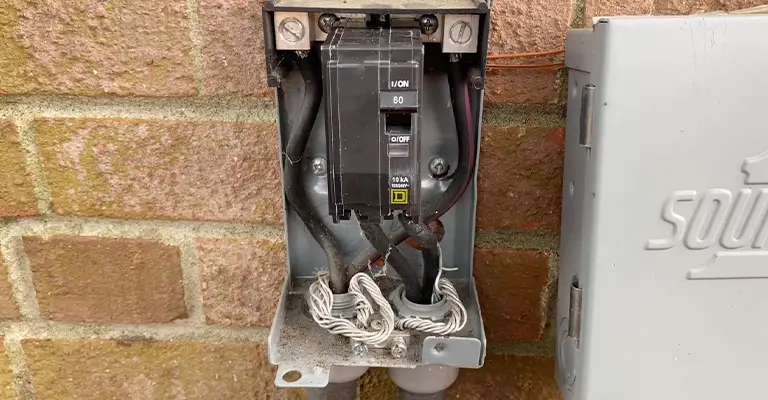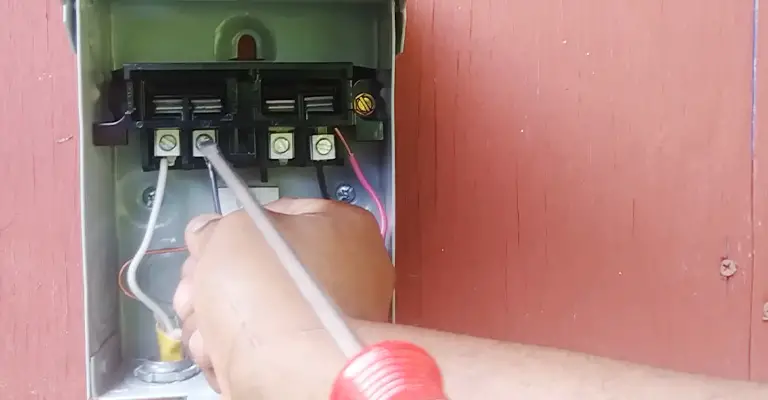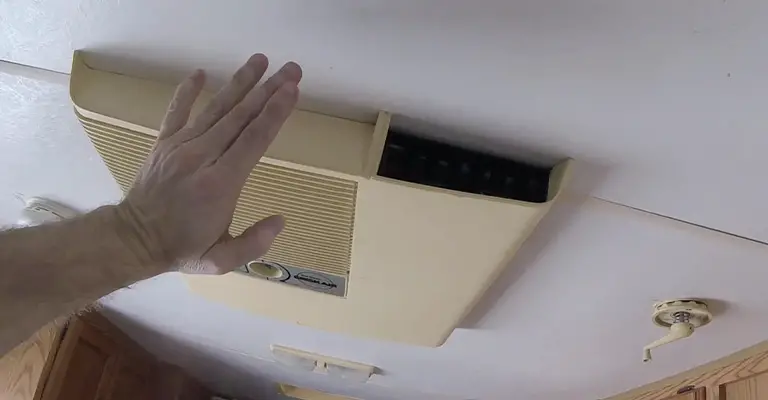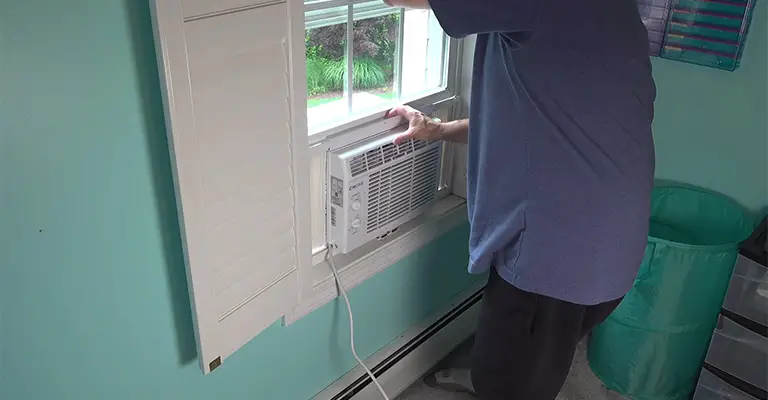The number of air conditioners that can be safely run on a single circuit depends on the circuit breaker’s size and the air conditioners’ rated amperage.
It is crucial to consider both the circuit breaker’s size and the air conditioner’s rated amperage to ensure that the circuit is not overloaded, which can cause the circuit breaker to trip or potentially result in a fire hazard.
A typical home air conditioner tends to use around 7,000 watts of power. In an average-sized United States home, you’d find about 200 amperes of electrical service.
This essentially means that each air conditioner gobbles up approximately 35% of the total available power on a single circuit.
If your plan involves running two air conditioners simultaneously, it’s crucial to have them plugged into separate circuits; otherwise, you might end up tripping your breaker.
For those with standard-sized homes, running two air conditioners on one circuit is generally doable.
However, if your home is on the larger side or you’ve opted for a more heavy-duty air conditioner, it might be wise to consider using multiple circuits.
To play it safe and make sure your electrical setup is sound, it’s always a good idea to consult with an electrician.
They can assess your situation and provide guidance on how many air conditioners your home can handle on a single circuit.
Generally, it is recommended to use a separate circuit for each air conditioner to ensure that the circuit is not overloaded.
However, if you are using smaller air conditioners with low-rated amperage, it may be possible to run multiple units on a single circuit.
To determine the maximum number of air conditioners that can be safely run on a single circuit, you will need to consult the manufacturer’s specifications for the air conditioners and the electrical panel.
You should also consider the overall electrical load on the circuit, as other devices and appliances connected to the same circuit can also contribute to the total load.
It is important to note that the maximum number of air conditioners that can be safely run on a single circuit may vary based on the specific characteristics of the circuit and the air conditioners.
And it is always best to consult a qualified electrician to determine the safe capacity for your specific situation.
Can I Put 2 Air Conditioners In 1 Circuit Breaker?

It’s all about the numbers. Two small window units in the upstairs bedrooms may share the same circuit. Ideally, it should be a 20-amp breaker with 12-gauge wiring.
It’s not even worth considering requesting two central units to handle opposite wings of a rambling ranch. You won’t be able to find code wherever you live, and no reputable installer would do it.
In general, the answer is no. Whenever one starts up, the circuit breaker will trip due to the start-up current of the other. They both tripped the circuit breaker simultaneously due to their current draw.
It is also possible that other loads on the circuit may be affected. According to our calculation, both air conditioners have a power consumption greater than 1200 watts.
In addition, the rated circuit capacity and rated amperage on the labels cannot exceed 80% of each other. One 15-amp circuit could support two modern and efficient 5000 BTU window units.
Can I Put 2 Air Conditioners In One Line With 2 Breakers?

Neither can you do this, nor does it have any purpose? Your 120V A/C unit has a dedicated 30A circuit. This means that this circuit has no more than 30A available and the A/C installed needs that much power.
It still needs to be more to power the second A/C unit if you add another unit to the same circuit (notwithstanding all code concerns). As a result, the breaker will open whenever both are operating at the same time.
Replace your current 30A line with one from another 30A breaker in the same box. As you mentioned, your box is full, which is a problem.
If you can reorganize the current box to create more space for another circuit, then I recommend you seek the services of a qualified electrician. Other than that, upgrading your box will probably make more space available.
A second line may be connected to the existing 30-Amp breaker to power the second AC unit; however, if your breaker is DESIGNED to allow you to connect two feeds (local codes may take precedence over NEC requirements).
On the other hand, if the combined load of your AC units is less than 30 amps, you might be able to place them on the same breaker. They may combine and overload the circuit breaker, especially if they start simultaneously.
Also, if they both kick on simultaneously, the lights on the same circuit may dim. You should ask your electrician to consider both options.
Can I Run Both Of My RV’s Air Conditioners on 30 Amp Service?

You’ll have no problem running both ACs when plugged into a 50-amp circuit in your RV. I’ll assume your RV can also be plugged into a 50-amp circuit. Moreover, I assume that your RV does not have an Energy Management System (EMS).
Having attempted to operate both ACs on the 30-amp service and trip the circuit breaker on the RV park’s electrical hookup, you have tripped the circuit breaker and cannot run either AC.
When an RV is connected to a 30-amp circuit, it is typically impossible to run both ACs simultaneously. It goes without saying that the older the RV and the larger the AC units, the less chance there is of successfully running both ACs simultaneously.
Newer RVs with more energy-efficient AC units can run two units on 30 Amps, provided you do not run any other electrically demanding appliances. For example, a microwave, hair dryer, and water heater heating element with an electric element.
The ACS on some of the newer RVs with Energy Management Systems (EMS) cannot run simultaneously on 30 amps.
RV Energy Management Systems, or EMS, is an automatic control system that adjusts your RV’s appliances automatically based on the available power.
Your AC will turn off other appliances if you’re running it on a 15 or 30-amp circuit to avoid tripping the circuit breaker.
A few RVers have modified their RVs’ electrical systems so that one of the AC units can be plugged into a separate 15-amp receptacle (if available).
The modification of the factory-installed electrical system on the RV is not something I will discuss here since it involves modification of the factory-installed electrical system and, if done incorrectly, can create safety concerns.
Electrical Requirements For Window Air Conditioners

Before purchasing one, one must understand the electrical requirements for a window air conditioner. Window air conditioners typically have a higher power intake than standard household appliances.
For AC units, the voltage rating is usually 115, 125, or 220 volts, and the amperage is usually 15 to 20 amps. Units rated at 15,000 BTUs or less require a 210-volt circuit, while those above 15,000 BTUs require a 220-volt circuit.
Some smaller units can be operated off a household outlet if they have a 115-volt, 15-amp requirement. A dedicated outlet is required to carry the electrical current for larger, more energy-demanding units.
It’s best to select a replacement outlet that has the same ratings and plug type as your AC unit’s existing outlet, so you won’t need an electrician to install a new outlet. You should note the new unit’s wattage, voltage, and plug type when installing it.
It is common for plug receptacles to be pictured alongside their NEMA (National Electrical Manufacturers Association) classification, which makes identifying plug types easy.
Notes:
A typical home circuit consists of 14-gauge wire and a 15-amp breaker, capable of handling 1800 Watts (about 5000 Btu).
As long as the A/C units are plugged into different circuits, and there is little else on those circuits (perhaps a lamp or two), you should be fine.
Plugging them both into the same circuit will cause them to blow as soon as they are both running simultaneously.
If both units are on the same circuit, a 20-amp breaker protected by 12-gauge wire would only be able to handle 2400 watts, thus causing the circuit to blow.
By plugging a lamp into each outlet and tripping one breaker at a time, you can determine whether the outlets are on the same circuit.
Final Tips
There may be a problem with compressors turning on when two air conditioners are on one circuit.
Even though both fans may run simultaneously, the circuit may not be able to handle the load necessary to trigger the compressor on one unit if both are operating simultaneously.
It is probably not wise to work in a panel if you are inexperienced with electrical work. You should not do it. I will use a GFCI if the house has no grounds. Single outlets are fine unless the house has no grounds.
There is nothing more frustrating than arc faults. There is always an advantage to running on a dedicated track. It is always better to choose a wire gauge that is overkill than one that is under-killed.







